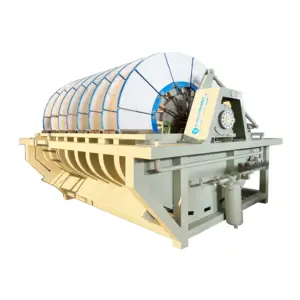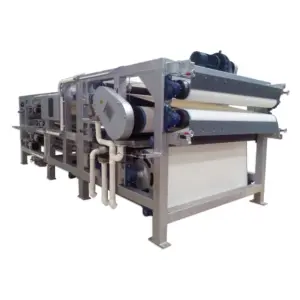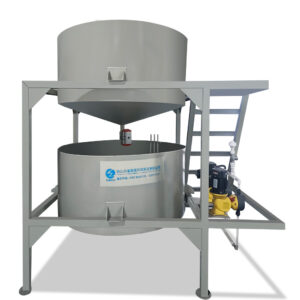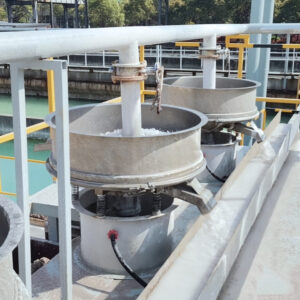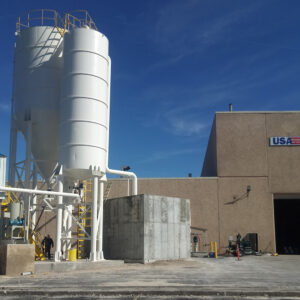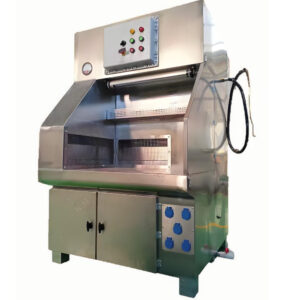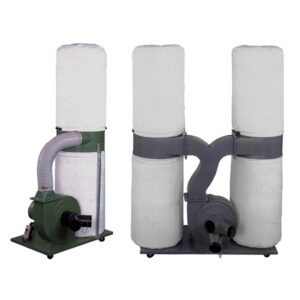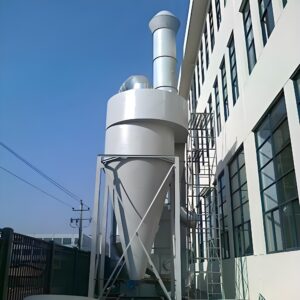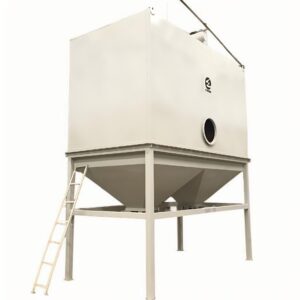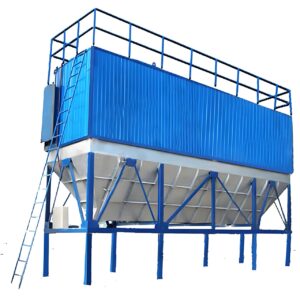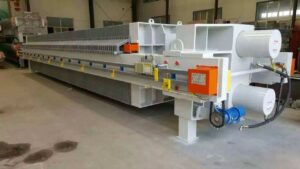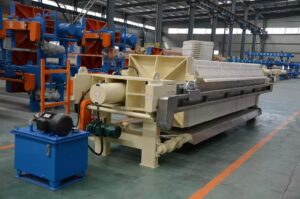The ceramic and tile manufacturing industry faces mounting pressure to address ceramic factory wastewater challenges that threaten both environmental compliance and operational efficiency. With global ceramic production generating over 2.5 billion liters of contaminated water daily, factories struggle with complex effluent streams containing suspended solids, heavy metals, and chemical residues that can devastate local water systems if improperly treated.
Without effective treatment systems, ceramic manufacturers risk regulatory violations, costly fines, and potential facility shutdowns. The consequences extend beyond immediate penalties—untreated wastewater can contaminate groundwater supplies, harm aquatic ecosystems, and damage a company’s reputation in an increasingly environmentally conscious market.
This comprehensive guide explores proven solutions for tile factory wastewater treatment, examining both traditional methods and cutting-edge technologies that enable manufacturers to achieve regulatory compliance while recovering valuable resources. You’ll discover practical implementation strategies, cost-effective system designs, and expert insights that help ceramic facilities transform wastewater challenges into competitive advantages.
What is Ceramic Factory Wastewater and Why Does It Matter?
Ceramic factory wastewater represents one of the most complex industrial effluent streams, containing a diverse mixture of clay particles, chemical glazes, and process chemicals that require specialized treatment approaches. Unlike simple domestic wastewater, ceramic manufacturing effluent varies significantly in composition depending on production schedules, product types, and raw material sources.
The significance of proper ceramic wastewater management extends far beyond regulatory compliance. Modern PORVOO Clean Tech facilities demonstrate that effective treatment systems can recover up to 85% of process water for reuse, dramatically reducing operational costs while minimizing environmental impact. This water recovery potential makes treatment systems essential investments rather than mere compliance expenses.
Industry data reveals that untreated ceramic wastewater typically contains 500-3,000 mg/L of suspended solids, pH levels ranging from 4.5 to 11.2, and heavy metal concentrations that can exceed discharge limits by 300-500%. These characteristics make ceramic effluent particularly challenging for municipal treatment facilities, often requiring specialized on-site treatment before discharge.
| Parameter | Typical Range | Discharge Limit | Treatment Efficiency Required |
|---|---|---|---|
| Suspended Solids | 500-3,000 mg/L | 30-50 mg/L | 95-98% |
| pH | 4.5-11.2 | 6.0-9.0 | Neutralization Required |
| Heavy Metals | 5-50 mg/L | 0.5-2.0 mg/L | 90-96% |
How Does Tile Manufacturing Generate Complex Wastewater Streams?
Understanding wastewater generation patterns is crucial for designing effective tile factory wastewater treatment systems. Each production stage contributes unique contaminants that require specific treatment approaches.
Clay Processing and Forming Operations
The initial clay preparation stage generates the highest volume of wastewater, typically accounting for 60-70% of total effluent flow. Raw clay mixing operations produce water containing fine clay particles, organic additives, and processing chemicals. These streams typically exhibit suspended solid concentrations of 2,000-4,000 mg/L with particle sizes ranging from 0.1 to 50 microns.
In our experience working with ceramic manufacturers, the particle size distribution in clay processing wastewater significantly impacts treatment system design. Particles smaller than 2 microns require advanced separation technologies, while larger particles can be effectively removed through conventional sedimentation processes.
Glazing and Firing Processes
Glazing operations introduce heavy metals, colorants, and organic compounds that complicate treatment requirements. Common contaminants include lead, cadmium, barium, and chromium compounds used in specialized glazes. The firing process generates cooling water containing thermal pollution and residual chemical compounds from glaze volatilization.
According to recent industry studies, glazing wastewater typically contains 15-45 mg/L of combined heavy metals, with lead concentrations often exceeding 10 mg/L in facilities producing decorative tiles. These levels require specialized treatment technologies beyond conventional biological systems.
Quality Control and Finishing Stages
Final processing stages generate lower volumes but higher concentrations of specific contaminants. Grinding and polishing operations produce fine ceramic dust suspended in water, while quality control testing may introduce laboratory chemicals. These streams, while representing only 10-15% of total wastewater volume, often contain the most challenging contaminants for treatment.
What Are the Main Contaminants in Ceramic Industry Water Treatment?
Effective ceramic industry water treatment requires comprehensive understanding of contaminant characteristics and their treatment implications. Each contaminant type demands specific removal mechanisms and monitoring protocols.
Suspended Solids and Clay Particles
Suspended solids represent the most visible and voluminous contaminant category in ceramic wastewater. These particles range from coarse sand-sized materials to colloidal clay particles that remain suspended for extended periods. The primary challenge lies in removing ultra-fine particles smaller than 1 micron, which resist conventional gravity separation.
Advanced ceramic facilities utilizing membrane filtration systems achieve suspended solids removal rates exceeding 99.5%, enabling direct water reuse in production processes. However, the high concentration of fine particles requires robust pretreatment to prevent membrane fouling and extend operational life.
Chemical Glazes and Heavy Metals
Heavy metal contamination poses the most serious environmental and regulatory challenge in ceramic wastewater treatment. Common heavy metals include:
- Lead: 2-15 mg/L in glazing wastewater
- Cadmium: 0.5-8 mg/L in colorant applications
- Chromium: 1-12 mg/L in specialized glazes
- Barium: 3-25 mg/L in various formulations
While these concentrations may seem manageable, regulatory discharge limits typically require 95-98% removal efficiency. Traditional chemical precipitation achieves 85-92% removal, while advanced electrocoagulation systems can achieve 98-99.5% removal rates.
Organic Compounds and pH Variations
Organic additives used in ceramic processing create biochemical oxygen demand (BOD) and chemical oxygen demand (COD) that stress biological treatment systems. pH variations ranging from highly acidic (4.5) to strongly alkaline (11.2) require careful neutralization to prevent equipment corrosion and optimize treatment performance.
How Do Traditional Treatment Methods Handle Tile Factory Wastewater?
Traditional tile manufacturing effluent treatment systems rely on proven physical and chemical processes that effectively address primary contaminants while maintaining operational simplicity and cost-effectiveness.
Primary Sedimentation Systems
Conventional sedimentation remains the foundation of ceramic wastewater treatment, removing 70-85% of suspended solids through gravity separation. Primary clarifiers typically require 2-4 hours retention time for effective settling, with underflow concentrations reaching 15-25% solids by weight.
Modern sedimentation systems incorporate inclined plate settlers or tube settlers to increase surface area and improve separation efficiency. These enhancements reduce footprint requirements by 40-60% while improving removal efficiency to 85-92% for particles larger than 10 microns.
Chemical Coagulation and Flocculation
Chemical treatment using aluminum sulfate, ferric chloride, or polyaluminum chloride effectively destabilizes fine particles and enables removal of dissolved contaminants. Optimal coagulant dosing typically ranges from 150-400 mg/L depending on raw wastewater characteristics and target effluent quality.
Flocculation processes using anionic or cationic polymers create large, rapidly settling flocs that improve sedimentation efficiency. Proper polymer selection and dosing can reduce residual turbidity to less than 10 NTU while minimizing sludge production.
Sand Filtration and Clarification
Multimedia filtration systems provide final polishing for traditionally treated ceramic wastewater, achieving suspended solids concentrations below 15 mg/L. Sand filters typically operate at 5-8 m/hr loading rates with backwash cycles every 24-48 hours depending on influent quality.
What Advanced Technologies Are Revolutionizing Ceramic Production Wastewater Treatment?
Modern ceramic production wastewater treatment increasingly relies on advanced technologies that achieve superior effluent quality while enabling resource recovery and operational cost reduction.
Membrane Bioreactors and Ultrafiltration
Membrane bioreactor (MBR) technology combines biological treatment with membrane filtration to achieve exceptional effluent quality suitable for direct reuse. MBR systems treating ceramic wastewater typically achieve:
- Suspended solids: <2 mg/L
- BOD removal: >98%
- Heavy metal removal: 85-95%
- Pathogen removal: >99.9%
The primary limitation of MBR technology lies in membrane fouling caused by high concentrations of fine ceramic particles. However, proper pretreatment and membrane selection can extend operational cycles to 6-12 months between major cleanings.
Electrocoagulation Systems
Electrocoagulation represents a breakthrough technology for ceramic wastewater treatment, using electrical current to generate coagulants in-situ while simultaneously flotation and oxidation processes. This technology excels at heavy metal removal, achieving 98-99.5% removal efficiency for lead, cadmium, and chromium.
According to recent field studies, electrocoagulation systems treating ceramic wastewater operate at 15-25 kWh/m³ energy consumption while eliminating chemical coagulant costs. The technology particularly excels with variable wastewater characteristics, automatically adjusting treatment intensity based on real-time contaminant loads.
Zero Liquid Discharge Solutions
Zero liquid discharge (ZLD) systems represent the ultimate solution for ceramic facilities seeking complete water recovery and minimal environmental impact. These systems integrate multiple treatment technologies including reverse osmosis, evaporation, and crystallization to achieve 100% water recovery.
A leading ceramic manufacturer in Italy implemented a comprehensive wastewater treatment system achieving 95% water recovery while reducing operational costs by 40% through eliminated discharge fees and reduced freshwater consumption.
| Technology | Water Recovery | Capital Cost | Operating Cost | Best Application |
|---|---|---|---|---|
| Traditional | 0-20% | Low | Moderate | Basic compliance |
| MBR | 85-90% | Moderate | Moderate | Quality reuse |
| Electrocoagulation | 70-80% | Moderate | Low | Heavy metals |
| ZLD | 95-100% | High | Low | Maximum recovery |
How Can Factories Implement Effective Pottery Factory Water Treatment Systems?
Successful pottery factory water treatment implementation requires systematic planning that addresses technical requirements, operational constraints, and economic considerations specific to ceramic manufacturing environments.
System Design and Sizing Considerations
Proper system sizing begins with comprehensive wastewater characterization including flow rates, contaminant concentrations, and temporal variations. Ceramic facilities typically experience 3-5x flow variation between peak production and idle periods, requiring flexible treatment capacity or equalization systems.
Key design parameters include:
- Hydraulic loading: 2-6 m³/m²/day for biological systems
- Organic loading: 0.5-2.0 kg BOD/m³/day for activated sludge
- Solids loading: 50-150 kg/m²/day for sedimentation
- Retention time: 6-24 hours for equalization systems
Integration with Production Workflows
Effective treatment systems integrate seamlessly with production schedules to minimize operational disruption while maximizing treatment efficiency. This requires careful coordination between production planning and treatment system operations, particularly for batch discharge scenarios common in ceramic manufacturing.
In our experience, facilities achieving the highest treatment efficiency implement segregated collection systems that separate high-strength glazing wastewater from general process streams. This approach enables targeted treatment of the most challenging contaminants while reducing overall treatment costs.
Cost-Benefit Analysis Framework
Investment decisions for ceramic wastewater treatment systems should consider both direct costs and indirect benefits including:
Direct Costs:
- Capital equipment and installation
- Operating labor and maintenance
- Energy consumption and chemicals
- Sludge disposal and management
Indirect Benefits:
- Reduced freshwater consumption
- Eliminated discharge fees
- Avoided regulatory penalties
- Enhanced corporate reputation
- Potential revenue from recovered materials
What Are the Regulatory Compliance Requirements for Ceramic Wastewater Discharge?
Understanding regulatory requirements is essential for designing compliant ceramic factory wastewater treatment systems that meet current standards while anticipating future regulatory trends.
International Standards and Guidelines
The World Health Organization and various international bodies establish baseline standards for ceramic wastewater discharge, typically focusing on:
- Suspended solids: 30-50 mg/L maximum
- pH: 6.0-9.0 standard range
- Heavy metals: Varies by metal (0.1-2.0 mg/L)
- BOD: 20-40 mg/L maximum
- Temperature: <3°C above ambient
Regional Variations in Discharge Limits
Local regulations often impose stricter limits than international standards, particularly in water-stressed regions or environmentally sensitive areas. European Union standards typically require 90-95% removal efficiency for priority pollutants, while emerging markets may focus primarily on suspended solids and pH control.
Recent regulatory trends emphasize resource recovery and circular economy principles, with some jurisdictions offering incentives for water reuse and material recovery systems. This shift creates opportunities for ceramic manufacturers to gain competitive advantages through advanced treatment technologies.
How Do Modern Solutions Address Common Challenges in Tile Manufacturing Effluent?
Contemporary approaches to tile manufacturing effluent treatment focus on integrated solutions that address multiple challenges simultaneously while creating operational and economic value.
Water Recovery and Reuse Strategies
Modern ceramic facilities implement multi-stage treatment systems that produce water quality suitable for various reuse applications. Primary treated water meets requirements for initial clay mixing, while advanced treated water can be used for equipment cleaning and glaze preparation.
A successful case study from a Turkish ceramic manufacturer shows that implementing advanced treatment technologies reduced freshwater consumption by 75% while achieving 100% regulatory compliance. The facility now operates with 90% water recycling, significantly reducing operational costs and environmental impact.
Sludge Management and Resource Recovery
Ceramic wastewater treatment produces significant quantities of sludge containing valuable raw materials. Progressive facilities implement sludge processing systems that recover clay materials for reuse in production or sale to other manufacturers.
Advanced sludge dewatering systems achieve 25-35% solids content, reducing disposal volumes by 60-70%. Some facilities further process dewatered sludge through thermal drying to create ceramic additives, converting waste streams into revenue sources.
The evolution toward sustainable manufacturing practices positions effective wastewater treatment as a strategic advantage rather than operational burden. Ceramic manufacturers implementing comprehensive treatment systems achieve regulatory compliance while reducing operational costs and creating competitive advantages through resource recovery.
Modern treatment technologies offer unprecedented opportunities for ceramic facilities to transform wastewater challenges into operational benefits. Whether implementing traditional systems for basic compliance or advanced technologies for maximum resource recovery, the key lies in selecting solutions that align with specific facility requirements and long-term sustainability goals.
For ceramic manufacturers ready to implement effective wastewater treatment solutions, partnering with experienced technology providers ensures optimal system design and reliable long-term performance. The investment in proper treatment infrastructure pays dividends through reduced operational costs, regulatory compliance, and enhanced environmental stewardship that positions facilities for sustainable future growth.
Frequently Asked Questions
Q: What is Ceramic Factory Wastewater, and why does it need treatment in the tile industry?
A: Ceramic factory wastewater refers to the contaminated water produced during tile and ceramic manufacturing, containing suspended solids, heavy metals, and organic and inorganic chemicals. Treatment is essential to prevent harmful pollution, protect the environment, and meet regulatory discharge standards for the tile industry. Proper handling of ceramic factory wastewater is critical for sustainable tile industry solutions, ensuring safe discharge, water reuse, and compliance with both local and international environmental laws.
Q: What are the main pollutants in Ceramic Factory Wastewater relevant to Tile Industry Solutions?
A: Key pollutants found in ceramic factory wastewater include:
- Suspended solids: From clay and glaze slurries.
- Heavy metals: Such as lead, cadmium, and chromium, originating from raw materials and glazes.
- Organic and inorganic chemicals: Such as binders, dispersants, and cleaning agents.
Effective tile industry solutions focus on removing these pollutants to create cleaner effluents suitable for reuse or safe discharge.
Q: What are common methods used to treat Ceramic Factory Wastewater in the tile industry?
A: Common treatment methods for ceramic factory wastewater include:
- Sedimentation and coagulation: These processes remove suspended solids and reduce turbidity.
- Filtration: Sand, coal, or advanced membrane systems further purify wastewater.
- Biological treatment: Occasionally used for organic matter, but less common in tile industry solutions.
- Membrane technology: Ceramic or polymer membranes provide high-efficiency filtration for recyclable water, addressing both organic and inorganic contamination without heavy chemical use.
Q: How effective are advanced filtration technologies like ceramic membranes in treating Ceramic Factory Wastewater?
A: Advanced filtration technologies, such as ceramic membranes, are highly effective for treating ceramic factory wastewater in the tile industry. These systems can remove over 99% of contaminants, resist fouling, and tolerate harsh industrial conditions. Ceramic membrane filtration supports water recycling, reduces chemical dependency, and helps tile manufacturers meet stringent water quality standards. Multistage membrane systems further improve reliability and extended operational periods between cleanings.
Q: Can Ceramic Factory Wastewater be reused in the tile industry after treatment?
A: Yes, with proper treatment, ceramic factory wastewater can be safely reused within the tile industry. Solutions such as advanced filtration and membrane technology significantly reduce contaminants, allowing treated water to be cycled back into production processes or used for cleaning and other non-potable applications. Reuse not only conserves water resources but also lowers operational costs and supports sustainable tile industry solutions.
Q: What are the challenges in implementing Tile Industry Solutions for Ceramic Factory Wastewater management?
A: Implementing effective tile industry solutions for ceramic factory wastewater management faces several challenges:
- Maintaining consistent treatment quality across fluctuating production levels.
- Controlling membrane fouling and ensuring long operational life of filtration systems.
- Meeting regulatory limits for chemical oxygen demand (COD) and heavy metal discharge.
- Balancing capital and operational costs while achieving environmental and economic benefits.
Addressing these challenges requires robust, scalable treatment technologies and ongoing process optimization.
External Resources
ENVIRONMENTAL SOLUTION FOR EFFLUENT OF TILE INDUSTRY – This research paper examines coagulation and flocculation as primary wastewater treatment methods for ceramic tile factories, with detailed results on water recycling efficiency and reduced chemical usage.
WASTEWATER AND MUD TREATMENT PLANTS – Cogede’s industry-focused page describes advanced wastewater and mud treatment technologies for ceramic and tile manufacturers, including thickening, filtration, and water recycling solutions.
Optimal Treatment of Ceramic Industrial Wastewater – This academic article analyses several treatment methods for ceramic factory wastewater, comparing chemical sedimentation, flotation, cyclone separation, and filtration to identify the most effective solution for industry reuse.
Optimal Treatment of Ceramic Industrial Wastewater (PDF) – The study explores the suitability of treatment processes for ceramic tile wastewater, recommending cyclone separation with dual filtration for meeting industry recycling standards.
Wastewater Treatment in the Ceramics Industry – This article provides insights into wastewater challenges and tailored treatment processes in ceramics manufacturing, highlighting solutions for efficient water reuse and regulatory compliance.
Environmental Impact and Waste Management in Ceramic Industry – This peer-reviewed journal article discusses environmental considerations and advanced wastewater management strategies specifically for the ceramic and tile sector, with a focus on sustainable practices and resource recovery.
